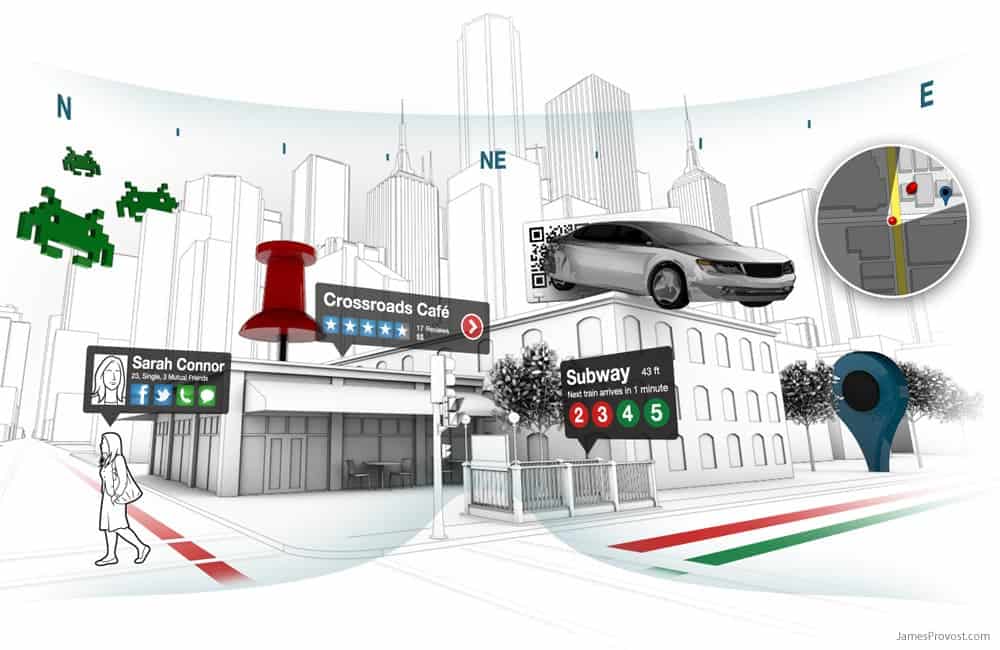No matter where you are, everyone is always connected
The introduction line above here, is an aphorism from an old (1998) anime called Serial Experiment Lain, in this anime everything and everyone are always connected to the net and the story plot run both on the physical and the virtual world. This anime was broadcast 15 year ago, one year before Matrix, but some year after the cyberpunk revolution of the 80's.
All of these things are pioneer of the idea of the Internet of Things (IoT) which is the current technological trends for the coming years: from the 80's we imagine a world full connected to the net, physical and virtual world connected into a new way of existence.
But what is this IoT things? IoT , according to the wikipedia definition, is a concept born in the 1999 from the mind of Kevin Ashton and refers to the virtual representation of some real object and their connection on the net. Using some tag, like RFID/NFC chip or even a simple qr-code, the object can be referred to it's virtual entity.
Imagine: you go into a shop in your preferred mall and see some dress you like, with your AR-glasses watch and select the object and put it into a virtual shopping cart.
Then you move near the mirror, put your phone (which is connected with your glasses) into the right place on the mirror and your cart will appear on the mirror glass, then you can choose something there is in your cart and virtual try on yourself.
Then when your are done you simply put your phone on the register, doing this you just do the self checkout, empty your cart and print the bill, when required you pay all what you buy simply putting your phone on the contact less card reader. After paying your order, go out from the shop, and see the street of the mall, on your lenses appear all the information needed from every shop...
... On the metro on the way back home, you check the temp in your house and set ON the heating system, during the trip you remember that you want to cook some chicken tonight, so you turn ON the oven from your smartphone. Meanwhile your cleaning robot send you an notification that he has done his work, and while wait for new task he go to the recharger point...
For some of you these situation seems like something from an Sci-Fi movie, but in fact this is more near to us than you can expect: nfc payment from your phone is already real in some country (like USA and UK for example), the Google Glasses are near to the official release (the rumors say that they release the G-Glass during the 2014) and other similar device are in the home straight, there is some app for our smartphone which give a real Augmented Reality experience and domotic is already a reality in some nation.
Cisco System expect that before the 2020 there will be more than 30 billion device connected to the internet, not only smartphone or tablet or computer, but everything can have it's virtual counterpart, and at that moment the IoT change is name to Internet of Everything. We will be surrounded by computer and connection, the virtual world will be inseparable from the physical world and vice versa.
I read and hear lot of speeches, from the internet and from my CEO, and when I hear one of them reduce this digital revolution to one single stage make me sad.
There is no way to separate electronic engineering from software engineering at this point, if you want to be remembered as innovator you can't simply follow the flow doing some app for a smartphone. You must create your system and your app must be integrated in your system.
When I proposed to do some workshop on the microcontroller platform for electrical prototyping, like Arduino, to the technical leader of my company, who has always been enthusiastic in this IoT stuff, he answered me "but why do we need this?". He simply do not get the point of these time, he simply follow the flow. This is not planning the work for the next year, this is a try to stay afloat against all the competitor.
If you want to be in the revolution you must be the leader of the revolution: In or Out, there is no half term.
We as software developers, designers, analysts, as electronic and telecommunications engineer for the first time in history, really have the future in our hand. We can shape the future, in the way we want.
We can finally create the Future that we are ever dream, but we are ready to shape it?
Ygy Freezone
When I proposed to do some workshop on the microcontroller platform for electrical prototyping, like Arduino, to the technical leader of my company, who has always been enthusiastic in this IoT stuff, he answered me "but why do we need this?". He simply do not get the point of these time, he simply follow the flow. This is not planning the work for the next year, this is a try to stay afloat against all the competitor.
If you want to be in the revolution you must be the leader of the revolution: In or Out, there is no half term.
We as software developers, designers, analysts, as electronic and telecommunications engineer for the first time in history, really have the future in our hand. We can shape the future, in the way we want.
We can finally create the Future that we are ever dream, but we are ready to shape it?
Ygy Freezone
















